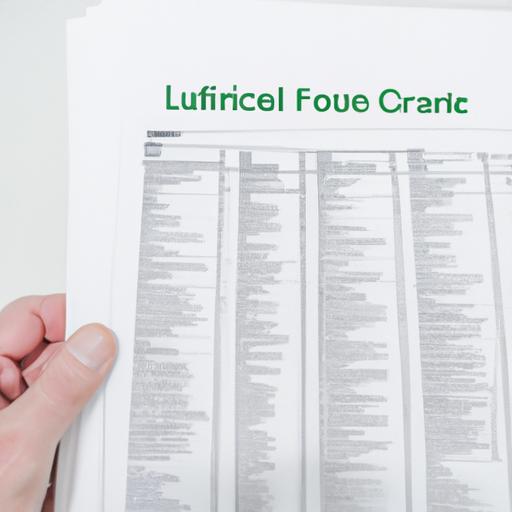In the world of equipment financing, having proper documentation is crucial for ensuring a smooth and successful transaction. But what exactly is equipment finance documentation, and why is it so important? In this article, I will provide you with a comprehensive introduction to equipment finance documentation, outlining its definition and highlighting the vital role it plays in the equipment financing process.
Definition and Importance
Equipment finance documentation refers to the legal agreements and paperwork involved in financing equipment acquisitions. It encompasses a variety of documents, including lease agreements, loan agreements, security agreements, UCC filings, promissory notes, and purchase orders. These documents serve as a binding contract between the equipment owner or lessor and the borrower or lessee, outlining the terms and conditions of the financing arrangement.
The importance of equipment finance documentation cannot be overstated. It serves as a roadmap that guides the entire financing process, ensuring clarity and protecting the rights and responsibilities of both parties involved. Without proper documentation, misunderstandings and disputes may arise, leading to costly delays and potential legal issues.
Role in the Equipment Financing Process
Equipment finance documentation plays a vital role at every stage of the equipment financing process. From the initial negotiation and agreement on terms to the final execution of the financing arrangement, accurate and comprehensive documentation is essential.
During negotiation, equipment finance documentation helps facilitate clear communication between the parties involved. It allows for a thorough understanding of the terms and conditions, ensuring that all aspects of the financing arrangement are agreed upon.
Once the agreement is reached, equipment finance documentation serves as a legally binding contract that protects the interests of both the equipment owner and the borrower. It outlines the payment and repayment terms, specifies the rights and responsibilities of each party, and provides recourse in case of default or breach of contract.
In summary, equipment finance documentation is the backbone of a successful equipment financing transaction. It provides the necessary framework for a smooth and transparent process, protecting the interests of all parties involved. In the following sections, we will delve deeper into the types of equipment finance documentation, their key components, and best practices for creating effective documentation. So, stay tuned for more insights into the world of equipment finance documentation!
Continue reading to explore the various types of equipment finance documentation, their key components, and best practices for creating effective documentation.
Types of Equipment Finance Documentation

When it comes to equipment financing, various types of documentation are involved to ensure a comprehensive and legally binding agreement. Let’s explore the key types of equipment finance documentation that play a crucial role in the financing process.
Lease Agreements
Lease agreements are one of the most common types of equipment finance documentation. They outline the terms and conditions for leasing equipment, including the lease period, rental payments, maintenance responsibilities, and end-of-lease options. These agreements provide clarity and protection for both the lessor and lessee.
Loan Agreements
Loan agreements are utilized when financing equipment through a loan arrangement. These agreements establish the terms of the loan, including the principal amount, interest rate, repayment schedule, and any collateral required. Loan agreements ensure that both the lender and borrower are on the same page regarding the financing terms.
Security Agreements
Security agreements are crucial in equipment financing transactions involving collateral. These agreements establish a security interest in the equipment, granting the lender the right to seize and sell the equipment in case of default. Security agreements provide assurance to the lender and often require UCC filings to establish priority over other creditors.
UCC Filings
UCC (Uniform Commercial Code) filings are legal documents filed with the state to publicly establish a creditor’s interest in the financed equipment. These filings provide notice to other potential creditors and protect the lender’s rights in the event of default or bankruptcy. UCC filings often accompany security agreements to ensure the lender’s priority.
Promissory Notes
Promissory notes are written promises to repay a specific amount of money borrowed for equipment financing. These notes outline the terms of the loan or lease, including the repayment schedule, interest rate, and any penalties for late payments. Promissory notes serve as evidence of the borrower’s commitment to repay the borrowed funds.
Purchase Orders
Purchase orders are utilized when financing equipment purchases. They specify the details of the purchase, including the equipment description, quantity, price, and delivery terms. Purchase orders provide a clear record of the transaction and serve as supporting documentation for financing agreements.
Understanding the various types of equipment finance documentation is essential for navigating the financing process successfully. In the next section, we will explore the key components that make up effective equipment finance documentation. So, let’s delve deeper into the intricacies of equipment finance documentation and how it ensures a smooth financing process.
Key Components of Equipment Finance Documentation

When it comes to equipment finance documentation, several key components must be present to ensure a comprehensive and well-structured agreement. Let’s explore these essential elements in detail:
Clear Identification of the Equipment Being Financed
One of the fundamental aspects of equipment finance documentation is the clear identification of the equipment being financed. This includes providing detailed descriptions, specifications, and any relevant serial numbers or identification codes. By explicitly stating the equipment involved, all parties can ensure that there is no ambiguity or confusion regarding the items covered by the agreement.
Detailed Terms and Conditions
Another critical component of equipment finance documentation is the inclusion of detailed terms and conditions. This section outlines the specific obligations, rights, and responsibilities of both the equipment owner or lessor and the borrower or lessee. It covers aspects such as the duration of the agreement, any restrictions on use, maintenance requirements, and insurance obligations. Clear and comprehensive terms and conditions help prevent misunderstandings and disagreements down the line.
Payment and Repayment Terms
The financial aspect of equipment financing is a crucial consideration, and therefore, equipment finance documentation must outline the payment and repayment terms. This includes specifying the amount of the financing, the frequency and method of payments, and any applicable interest rates or fees. Additionally, it is essential to include provisions for late payments, penalties, and the consequences of default to protect the interests of both parties.
Rights and Responsibilities of Both Parties
To establish a fair and balanced agreement, equipment finance documentation should clearly define the rights and responsibilities of both the equipment owner or lessor and the borrower or lessee. This includes outlining the obligations related to maintenance, repairs, and insurance coverage. It is also important to address issues such as ownership rights, the ability to transfer or sublease the equipment, and procedures for resolving disputes.
Default and Remedies Clauses
To address potential scenarios where one party fails to fulfill their obligations, equipment finance documentation should include default and remedies clauses. These clauses outline the consequences of default, such as the right to repossess the equipment or seek legal remedies. By including these provisions, the agreement provides a framework for handling disputes and ensures that both parties are aware of the potential consequences of non-compliance.
In conclusion, equipment finance documentation must encompass clear identification of the equipment, detailed terms and conditions, payment and repayment terms, rights and responsibilities of both parties, and default and remedies clauses. By including these key components, the documentation provides a solid foundation for a successful equipment financing arrangement. In the next section, we will delve into the importance of properly drafted equipment finance documentation.
Importance of Properly Drafted Equipment Finance Documentation

Mitigating Risks and Protecting Both Parties Involved
When it comes to equipment financing, the importance of properly drafted documentation cannot be emphasized enough. Well-drafted equipment finance documentation serves as a crucial tool for mitigating risks and protecting the interests of both the equipment owner and the borrower.
By clearly outlining the terms and conditions of the financing arrangement, including payment schedules, interest rates, and default clauses, properly drafted documentation helps to minimize the potential for misunderstandings or disputes. It ensures that both parties have a clear understanding of their rights and obligations, reducing the likelihood of disagreements down the line.
Furthermore, well-drafted equipment finance documentation includes provisions for collateral and security interests, providing an added layer of protection for the lender. In the event of default or non-payment, the lender can take legal action to recover their investment, helping to mitigate financial risks.
Ensuring Legal Compliance
Another critical aspect of properly drafted equipment finance documentation is ensuring legal compliance. Equipment financing is subject to various laws and regulations, and failure to adhere to these can have severe consequences.
By working with legal professionals experienced in equipment financing, you can ensure that your documentation meets all legal requirements. This includes compliance with state and federal laws, such as the Uniform Commercial Code (UCC) and specific industry regulations.
Proper legal compliance not only protects your rights as a lender or borrower but also helps to establish trust and credibility between the parties involved. It demonstrates a commitment to operating within the boundaries of the law and upholding ethical standards.
Facilitating Smooth Equipment Financing Transactions
Smooth and efficient equipment financing transactions rely on properly drafted documentation. Clear and concise documentation helps streamline the process, reducing the time and effort required to complete the transaction.
With well-drafted equipment finance documentation, all parties involved can easily understand their roles and responsibilities. This clarity promotes effective communication and minimizes the potential for delays or misunderstandings. It also enables a smoother transition of the equipment from the owner to the borrower, ensuring a seamless financing process.
In conclusion, properly drafted equipment finance documentation is vital for mitigating risks, ensuring legal compliance, and facilitating smooth equipment financing transactions. By investing time and effort into crafting thorough and accurate documentation, you can protect your interests and set the foundation for a successful financing arrangement. Now, let’s dive into the common challenges faced when dealing with equipment finance documentation and explore ways to overcome them.
Common Challenges in Equipment Finance Documentation
Creating effective equipment finance documentation can be a complex task. There are several common challenges that can arise during the process. Let’s explore these challenges and understand how they can impact the quality and effectiveness of the documentation.
Ambiguity and Vagueness
One of the major challenges in equipment finance documentation is the presence of ambiguity and vagueness. When the terms and conditions are not clearly defined, it can lead to misunderstandings and disputes down the line. Ambiguous language can leave room for interpretation, increasing the likelihood of conflicting interpretations and disagreements between the parties involved. To overcome this challenge, it is essential to ensure that the documentation is drafted with precision and clarity, leaving no room for ambiguity.
Inadequate or Insufficient Information
Another challenge faced in equipment finance documentation is the inclusion of inadequate or insufficient information. The documentation should provide a comprehensive overview of the financing arrangement, including details about the equipment being financed, payment and repayment terms, rights and responsibilities, and default and remedies clauses. Insufficient information can lead to confusion and misunderstandings, jeopardizing the smooth execution of the financing transaction. To address this challenge, it is crucial to gather all necessary information and ensure that it is accurately reflected in the documentation.
Lack of Professional Legal Review
Equipment finance documentation is a legally binding contract that requires careful scrutiny by legal professionals. However, one common challenge is the lack of professional legal review. Without a legal expert’s input, there is a risk of overlooking important legal requirements or provisions. This can leave the documentation vulnerable to legal challenges or non-compliance with relevant laws and regulations. To mitigate this challenge, it is highly recommended to engage a qualified legal professional with expertise in equipment finance to review and validate the documentation.
By being aware of these common challenges, you can take proactive measures to address them while creating equipment finance documentation. By ensuring clarity, providing comprehensive information, and seeking professional legal review, you can navigate these challenges and create robust documentation that protects the interests of all parties involved.



